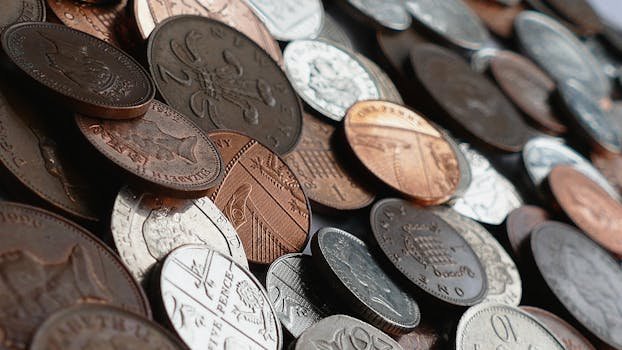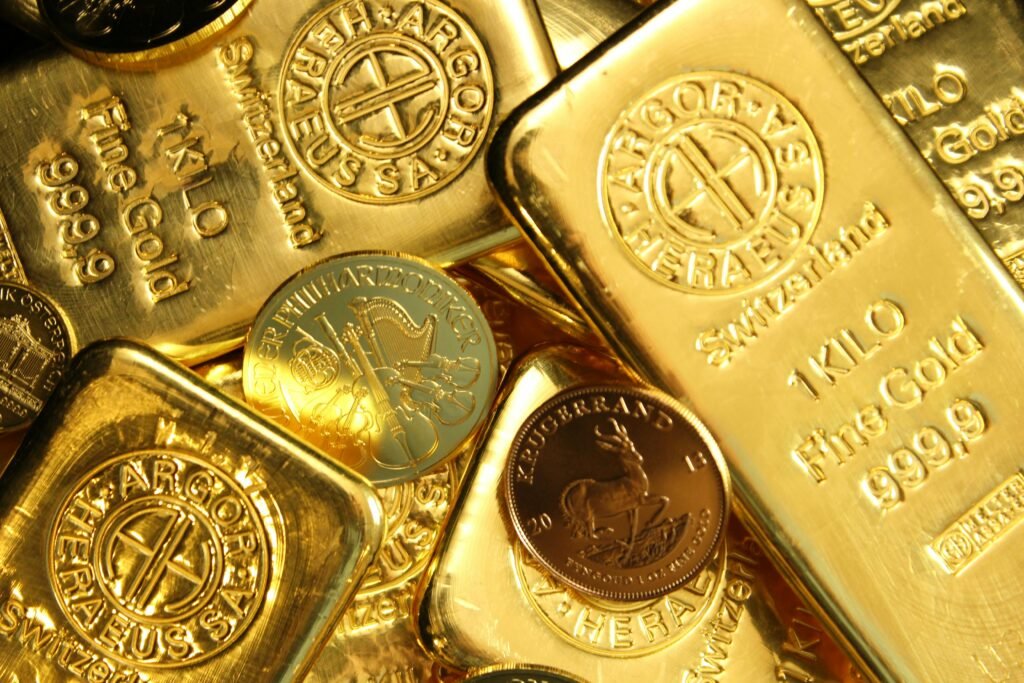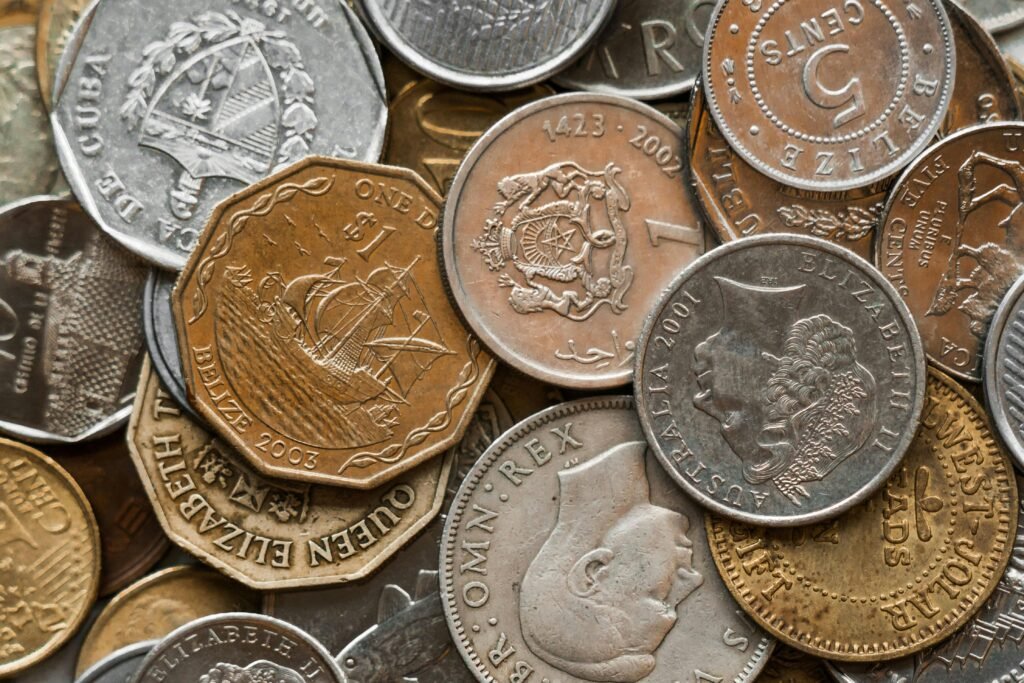Sheldon vs. SC/EBC/MBC
Grading is the language of numismatics. It’s how collectors, dealers, and auction houses agree on a coin’s condition, and therefore its value. Without a common grading framework, two people can look at the same coin and see wildly different prices. This visual reference guide demystifies the Sheldon 1–70 scale (dominant in the U.S.) and the most-used European systems—Spanish (SC/EBC/MBC/BC), German (SS/vz/ss), and French (FDC/SUP/TTB/TB/B)—and shows you how to translate among them. You’ll learn what grading measures (wear, strike, luster, eye appeal, problems), how each system describes those attributes, and why small differences—especially at the top—can multiply a coin’s price.
Because this is a “photo guide” and we can’t embed actual images here, you’ll find photo prompts—precise checklists of what to look for on a coin at each level. Use them alongside high-resolution images from trusted sources (grading services, auction archives) to calibrate your eye. Finally, you’ll get an approximate conversion table (Sheldon ↔ European), a breakdown of circulated vs uncirculated grades, pitfalls to avoid, and a printable micro-reference at the end.
What coin grading measures
Wear and preservation of details
Wear tells you how long a coin circulated. Look first at highest points (hair curls, wreath tips, eagle breast, shield lines). In lower grades, legends and rims blur; in higher grades, only the highest relief shows faint smoothing. Distinguish wear (loss of metal from circulation) from weak strike (as made). True wear dulls the texture and rounds sharp corners; weak strike leaves metal but with mushy definition from the press.
Strike quality
Strike is about how fully a design was brought up at the mint. You can have a coin with no wear but a soft strike, which should not be penalized like wear. Check known strike diagnostics for the type (e.g., full head on Standing Liberty quarters, full bands on Mercury dimes, full steps on Jefferson nickels). A superb strike can bump eye appeal within a grade; a flat strike can keep a coin out of gem territory even if surfaces are clean.
Luster and surfaces
Original mint luster looks like a cartwheel that rolls across the fields when you tilt the coin under light. On circulated pieces it breaks first on high points, producing luster breaks. In Mint State, look for contact marks (bagmarks), hairlines (from wiping), and frost/reflectivity on proofs. Luster matters as much as the absence of marks at MS-65 and above.
Eye appeal
Eye appeal is the gestalt of color, contrast, balance, and originality. Attractive natural toning, brilliant luster, and well-balanced devices can add desirability within a grade; blotchy or artificial toning, dark spots, and dullness subtract. Two MS-65s can trade at different prices because one is simply more beautiful.
Flaws and damage
Cleaning (especially abrasive), scratches, rim nicks, corrosion, PVC residue, spots, graffiti, and repairs all lower market grade. Problem coins may get “details” grades (problem noted, no numeric grade) and should be valued below straight-graded examples.
The Sheldon Scale (US standard): 1–70
History: Dr. William Sheldon, 1940s
The Sheldon scale originally modeled large cent pricing with a 1–70 numerical system; it evolved into the industry standard for all U.S. coins and many world issues. Third-party grading (PCGS, NGC) cemented it as the reference.
Scale structure: 1 (barely identifiable) to 70 (perfect)
- 1–58: Circulated (some wear present)
- 60–70: Uncirculated/Mint State (no wear; marks and luster quality define grade)
- Proofs use the same numbers (PF/PR-60 to PF/PR-70) for condition, with cameo designations for contrast.
Key grade tiers: circulated vs uncirculated
The line between AU-58 and MS-60 is crucial: AU-58 shows traces of friction on high points; MS-60 shows no wear, just heavy marks or dull luster.
Common grade abbreviations
AG, G, VG, F, VF, XF/EF, AU, MS, PR/PF. At MS: MS-60/61/62 (borderline), MS-63 (Choice BU), MS-64 (Choice+), MS-65 (Gem), MS-66 (Premium Gem), MS-67/68 (Superb), MS-69/70 (near/absolute perfection).
Circulated grades (1–58)
Photo prompt tip: Use a single coin type (e.g., Morgan dollar) and compare the same obverse/reverse diagnostics across grades to train your eye.
Poor (P-1)
Date barely readable; rims merge into fields; design is ghosts. Only identifiable by type, maybe a partial date/mintmark. Collectors only want this if it’s a wildly rare issue.
Fair (FR-2)
Slightly better than Poor. Outlines of devices visible; legends mostly gone. Value is mainly as a space-filler for rare dates.
About Good (AG-3)
Rims mostly merge with fields but legends begin to show. Major devices are flattened. Common in decades-worn circulation coins.
Good (G-4, G-6)
Rims separate from fields; legends readable; major devices are outlines with heavy wear. Internal detail largely gone.
Very Good (VG-8, VG-10)
Some central design reappears. Hair strands, wheat lines, wreath leaves begin to show—but still flat. Legends clear.
Fine (F-12, F-15)
Moderate wear overall, but clear detail in main devices. Hairlines merge; leaves show shapes; rims are full and bold.
Very Fine (VF-20, VF-30, VF-35)
Light to moderate wear. Sharp legends; distinct high-point detail; internal elements (feathers, leaf veins) are visible but slightly soft.
Extremely Fine (EF/XF-40, XF-45)
Minimal wear on highest points only; much original detail remains. Often some residual luster in protected areas.
About Uncirculated (AU-50, AU-53, AU-55, AU-58)
Slight friction on the very highest points; most luster still present, especially at AU-58. AU-58 can look better than a baggy MS-62 to the eye.
Uncirculated grades (60–70)
MS-60
No wear; heavy bagmarks, dull luster, and/or unattractive toning. Technically uncirculated, visually rough.
MS-63
Average strike and luster; several noticeable contact marks but not dominant. The typical “Choice” Mint State.
MS-65
Above-average strike, fewer and smaller marks, strong luster, pleasing eye appeal. The entry point to “Gem.”
MS-67
Exceptional strike and luster; only tiny, well-hidden marks; superb eye appeal. Truly scarce for many classic series.
MS-68–69
Near-perfection; surfaces almost flawless at 5–8× magnification. Common only for some modern issues with superb minting.
MS-70
Perfect under 5× magnification. Mostly theoretical for classic coins; achievable for select modern proofs/business strikes.
Proof grades (PR/PF-60 to PR-70)
Use grading inputs correctly with our valuation guide.
What “Proof” means
Proof refers to a manufacturing method (specially prepared dies/planchets, often multiple strikes for sharp detail and mirrored fields), not a grade. Proofs can be impaired by mishandling and grade down.
Proof grading scale
Same numeric bands as MS, with emphasis on mirror quality, hairlines, and contrast.
Cameo designations
Cameo (CAM) and Deep Cameo/Ultra Cameo (DCAM/UC) note frosted devices against mirrored fields. Stronger contrast = higher desirability within the same numeric grade.
European grading systems
Spanish (SC/EBC/MBC/BC/RC)
- SC (Sin Circular) ≈ uncirculated (no wear); sometimes split into SC-, SC, SC+.
- EBC (Extraordinaria) ≈ Extremely Fine (very light wear).
- MBC (Muy Bien Conservada) ≈ Very Fine.
- BC (Bien Conservada) ≈ Good to Fine range.
- RC (Regular Conservación) ≈ About Good to Good.
These terms emphasize overall preservation more than granular numeric steps.
German (Stempelglanz, vorzüglich, sehr schön, schön)
- Stempelglanz (Stgl.) ≈ Mint State/Brilliant Uncirculated.
- vz (vorzüglich) ≈ Extremely Fine.
- ss (sehr schön) ≈ Very Fine.
- s (schön) ≈ Fine.
Context and seller norms matter; German usage often aligns with continental practice in catalogs.
French (FDC, SUP, TTB, TB, B)
- FDC (Fleur de Coin) ≈ top uncirculated.
- SUP (Superbe) ≈ Extremely Fine.
- TTB (Très Très Beau) ≈ Very Fine.
- TB (Très Beau) ≈ Fine.
- B (Beau) ≈ Good.
French terms appear widely in European auction catalogs and dealer lists.
Conversion challenges
These systems were developed independently; equivalences are approximate. Market standards drift by country, series, and era, and top-end European descriptors (e.g., FDC, SC) can hide meaningful differences in strike and marks that the Sheldon numbers make explicit.
Sheldon ↔ European conversion (approximate)
Use as a guide, not a rule. Always verify with photos and, when possible, third-party graded comparables.
| Sheldon | Spanish | German | French | Notes |
|---|---|---|---|---|
| P-1 to AG-3 | RC | — | B | Barely identifiable to heavy wear |
| G-4 to G-6 | BC | s | B/TB | Legends clear, devices flat |
| VG-8 to VG-10 | BC+ / MBC- | s/ss | TB | More central detail appears |
| F-12 to F-15 | MBC-/MBC | ss | TB/TTB | Moderate wear, clear devices |
| VF-20 to VF-35 | MBC+/EBC- | ss/vz | TTB | Light to moderate wear |
| XF-40 to XF-45 | EBC | vz | SUP- | Minimal wear on high points |
| AU-50 to AU-58 | EBC+/SC- | vz/Stgl. | SUP/FDC- | Trace friction; much luster |
| MS-60 to MS-63 | SC-/SC | Stgl. | FDC- | Uncirculated; average to choice |
| MS-64 to MS-65 | SC | Stgl. (hoch) | FDC | Gem territory |
| MS-66 to MS-67 | SC+ | Stgl. (Spitzen) | FDC+ | Premium gem to superb |
| MS-68 to MS-70 | SC+ (select) | — | — | Mostly modern perfection |
Top-grade coins may fetch more via auction consignment.
Third-party grading services
PCGS, NGC (and others)
PCGS and NGC dominate market acceptance worldwide, offering standardized grading, authentication, tamper-evident encapsulation, high-resolution photography, and population reports. ANACS and ICG exist but command less liquidity/premium in many U.S. segments. In Europe, raw coins and national terms remain common, but slabs from PCGS/NGC increasingly set the international standard.
Benefits to buyers and sellers
Consistency, liquidity, and evidence. A slabbed MS-65 with images and cert verification sells faster and closer to fair value than a raw coin a buyer must grade from scratch. For expensive coins, the TPG guarantee (authenticity/grade policies) reduces transaction risk.
Photo guide: Sheldon grades illustrated (what to look for)
Use these checklists while viewing high-res photos of the same type. Compare highest points and luster across grades.
- G-4 (Good): Rims separated from fields; legends complete; major devices outlined, no internal detail; surfaces uniformly flat.
- VF-20 (Very Fine): Distinct detail reappears—hair strands, leaf shapes, feather groups; rims bold; moderate wear limited to higher relief.
- XF-45 (Extremely Fine): Only trace wear on highest points; most internal detail intact; patches of luster in protected areas.
- MS-63: No wear; average strike; multiple contact marks in fields/devices but acceptable eye appeal; luster continuous though not booming.
- MS-65 (Gem): Sharper strike; few, small marks; bright, rotating luster; balanced toning or brilliant fields; strong overall eye appeal.
- MS-67 (Superb): Needle-sharp strike; virtually no visible distractions under casual viewing; blazing luster and outstanding color/contrast.
Grading factors beyond wear
Strike
Know type-specific diagnostics (e.g., full steps, full bands) to avoid penalizing a weak strike as wear. A fully struck coin often looks a full grade higher to the eye.
Luster
Original luster behaves like a moving cartwheel under a single light. Flat, satiny, or “dead” surfaces can indicate wear or past cleaning. Breaks in luster pinpoint friction.
Toning
Natural toning adds character; artificial toning often shows unnatural color transitions and uniformity. Attractive, original toning can add value; ugly or suspicious toning subtracts.
Surface marks and cleaning
Random bagmarks are expected; parallel hairlines suggest wiping/cleaning. Look for PVC haze (greenish), spots, or corrosion—common killers of grade and value.
Eye appeal
The “x-factor.” If two coins share the same numeric grade, the one with balance and pop (color, contrast, luster) is worth more.
Common grading pitfalls
- Over-grading (wishful thinking): Everyone wants a Gem. The market punishes optimism.
- Ignoring tiny details: A single deep hit in a focal area caps grade.
- Confusing cleaned with original: Harshly cleaned coins have unnatural brightness and parallel hairlines.
- Not understanding “net grading”: A technically VF coin with a rim ding may sell for Fine money (or less).
- Type-blindness: Grading standards vary by series. Learn the diagnostics for the coin you’re grading.
Grading and value: the exponential relationship
- 1921 Morgan Dollar (illustrative):
- MS-63: Choice, decent luster, some marks—baseline gem candidate.
- MS-65: Fewer marks, stronger luster, eye-appealing toning → often 2–5× MS-63 price.
- MS-67: Extremely scarce in true Superb condition → sometimes 5–20× MS-65.
Small improvements at the high end reflect condition census scarcity and registry competition. That’s why a numerical grade point near the top moves price more than several points in mid-circulated ranges.
Self-grading vs professional grading
Learning to grade
Handle coins at shows, compare to certified examples, and use online tools (Photograde, CoinFacts images). Build a reference set: one accurately graded coin at each tier for your series.
When to submit to PCGS/NGC
Submit when (1) value jumps meaningfully if the coin straight-grades at your target, (2) authenticity is uncertain, or (3) your sale venue rewards slabs (auctions, high-end dealers).
Cost vs value
Fees, shipping, insurance, and turnaround matter. Don’t spend $60 to certify a $75 coin unless it’s for a set or authenticity.
Guarantees
Major TPGs offer guarantees on authenticity and grade (terms vary). If a coin is misattributed or over-/under-graded by their standard, you may have recourse.
Market standards and acceptance
- PCGS/NGC are the most liquid globally; their numbers anchor many dealer and auction decisions.
- Raw coins can be bargains—or traps. Price raw coins as if you might be one grade lower than your guess.
- Dealer self-grading varies; buy the coin, not the holder (unless the holder is PCGS/NGC and you agree with the grade).
- See grading tells on Morgan & Peace with real examples.
Resources for learning grading
- Books: Official ANA Grading Standards, PCGS Guide to Grading & Counterfeit Detection.
- Online: PCGS Photograde, CoinFacts/NGC Coin Explorer image archives, top auction house past-sale photos.
- In-person: Coin shows, clubs, and study groups—nothing beats seeing coins in hand under good lighting.
Printable quick reference (carry this to shows)
- Circulated:
- G-4: Full rims; legends complete; devices as outlines.
- VF-20: Clear internal detail; moderate wear; bold rims.
- XF-45: Minimal high-point rub; traces of luster.
- AU-58: Whisper of friction only; strong luster overall.
- Mint State:
- MS-63: No wear; average strike; noticeable but tolerable marks.
- MS-65: Few small marks; strong luster; above-average strike.
- MS-67: Virtually flawless to the eye; booming luster.
- European ≈ Sheldon:
- SC / Stgl. / FDC ≈ MS range; EBC / vz / SUP ≈ XF; MBC / ss / TTB ≈ VF.
Grading is art + science + experience
A coin’s grade is a translation of wear, strike, luster, surfaces, and eye appeal into a market-recognized shorthand. The Sheldon numbers give fine granularity; European terms summarize state of preservation. Neither is perfect; both depend on human judgment. If you train your eye with reliable photos, compare to certified benchmarks, and learn the diagnostics that matter for your series, you’ll make smarter buys, avoid cleaned/problem coins, and understand why MS-65 vs MS-67 can mean a 5–20× price jump. Grading is a skill—practice turns guesswork into confidence.



